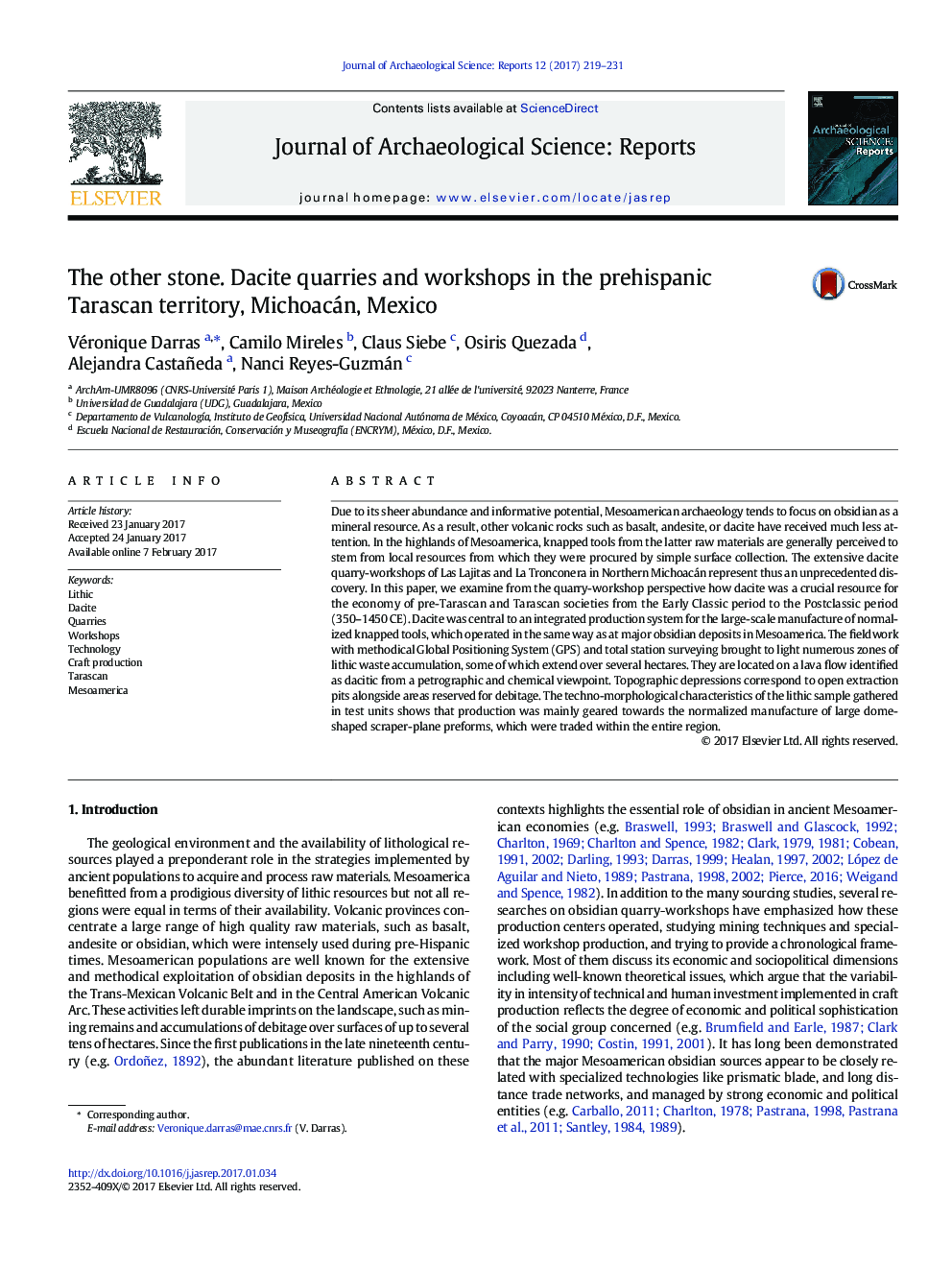| Article ID | Journal | Published Year | Pages | File Type |
|---|---|---|---|---|
| 5112491 | Journal of Archaeological Science: Reports | 2017 | 13 Pages |
Abstract
Due to its sheer abundance and informative potential, Mesoamerican archaeology tends to focus on obsidian as a mineral resource. As a result, other volcanic rocks such as basalt, andesite, or dacite have received much less attention. In the highlands of Mesoamerica, knapped tools from the latter raw materials are generally perceived to stem from local resources from which they were procured by simple surface collection. The extensive dacite quarry-workshops of Las Lajitas and La Tronconera in Northern Michoacán represent thus an unprecedented discovery. In this paper, we examine from the quarry-workshop perspective how dacite was a crucial resource for the economy of pre-Tarascan and Tarascan societies from the Early Classic period to the Postclassic period (350-1450Â CE). Dacite was central to an integrated production system for the large-scale manufacture of normalized knapped tools, which operated in the same way as at major obsidian deposits in Mesoamerica. The fieldwork with methodical Global Positioning System (GPS) and total station surveying brought to light numerous zones of lithic waste accumulation, some of which extend over several hectares. They are located on a lava flow identified as dacitic from a petrographic and chemical viewpoint. Topographic depressions correspond to open extraction pits alongside areas reserved for debitage. The techno-morphological characteristics of the lithic sample gathered in test units shows that production was mainly geared towards the normalized manufacture of large dome-shaped scraper-plane preforms, which were traded within the entire region.
Related Topics
Social Sciences and Humanities
Arts and Humanities
History
Authors
Véronique Darras, Camilo Mireles, Claus Siebe, Osiris Quezada, Alejandra Castañeda, Nanci Reyes-Guzmán,
